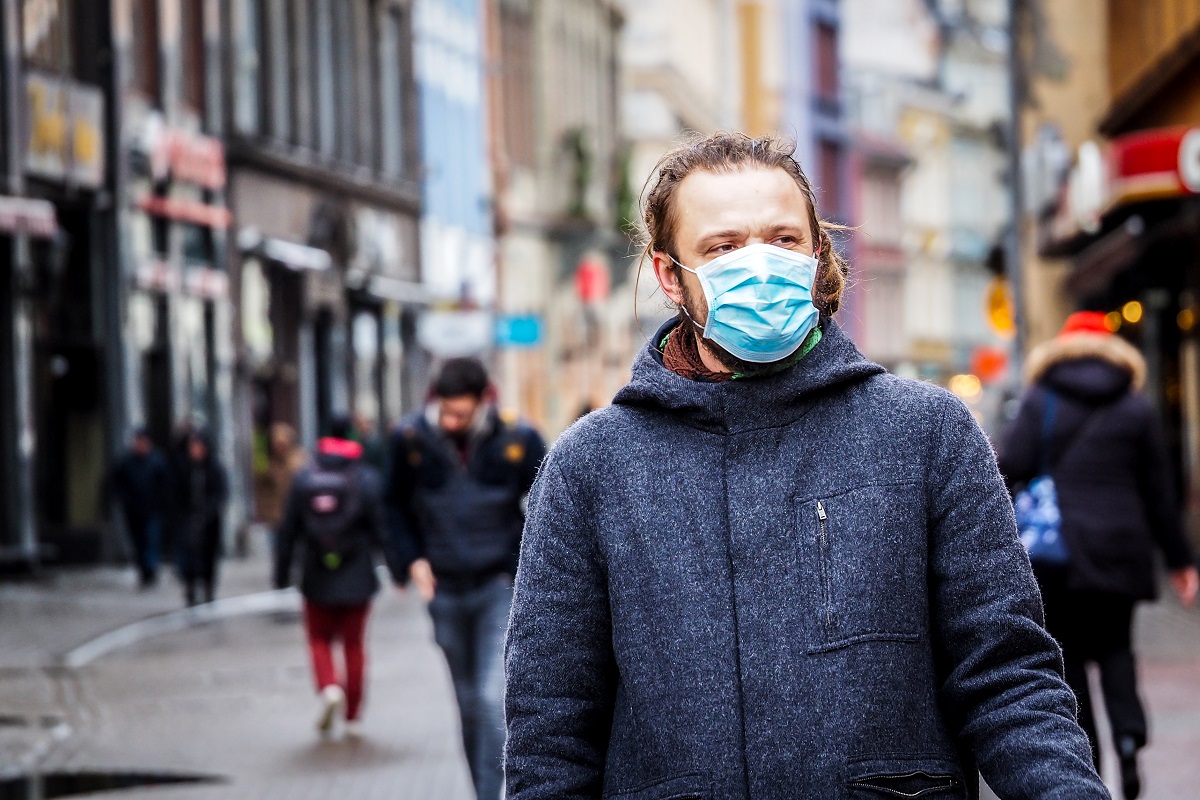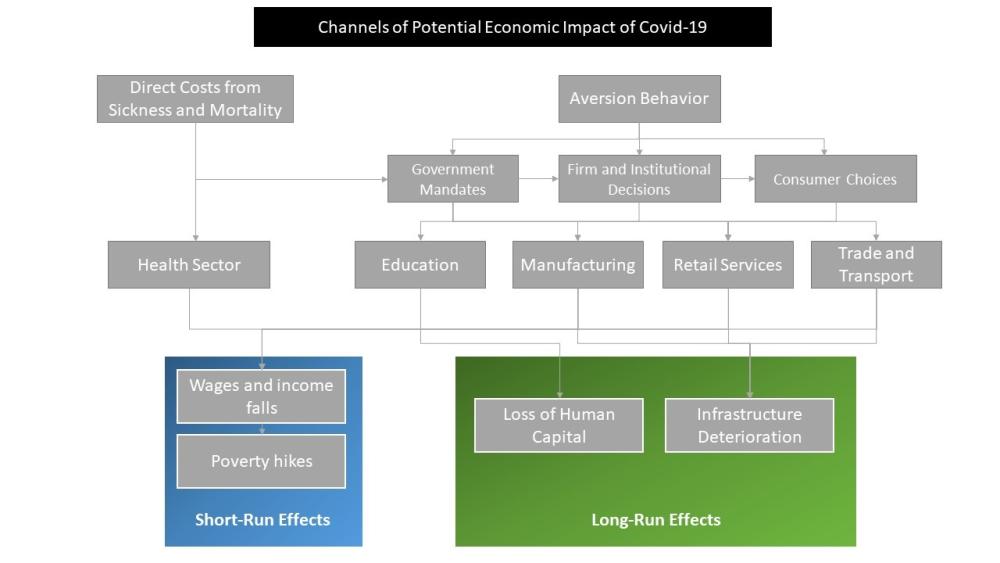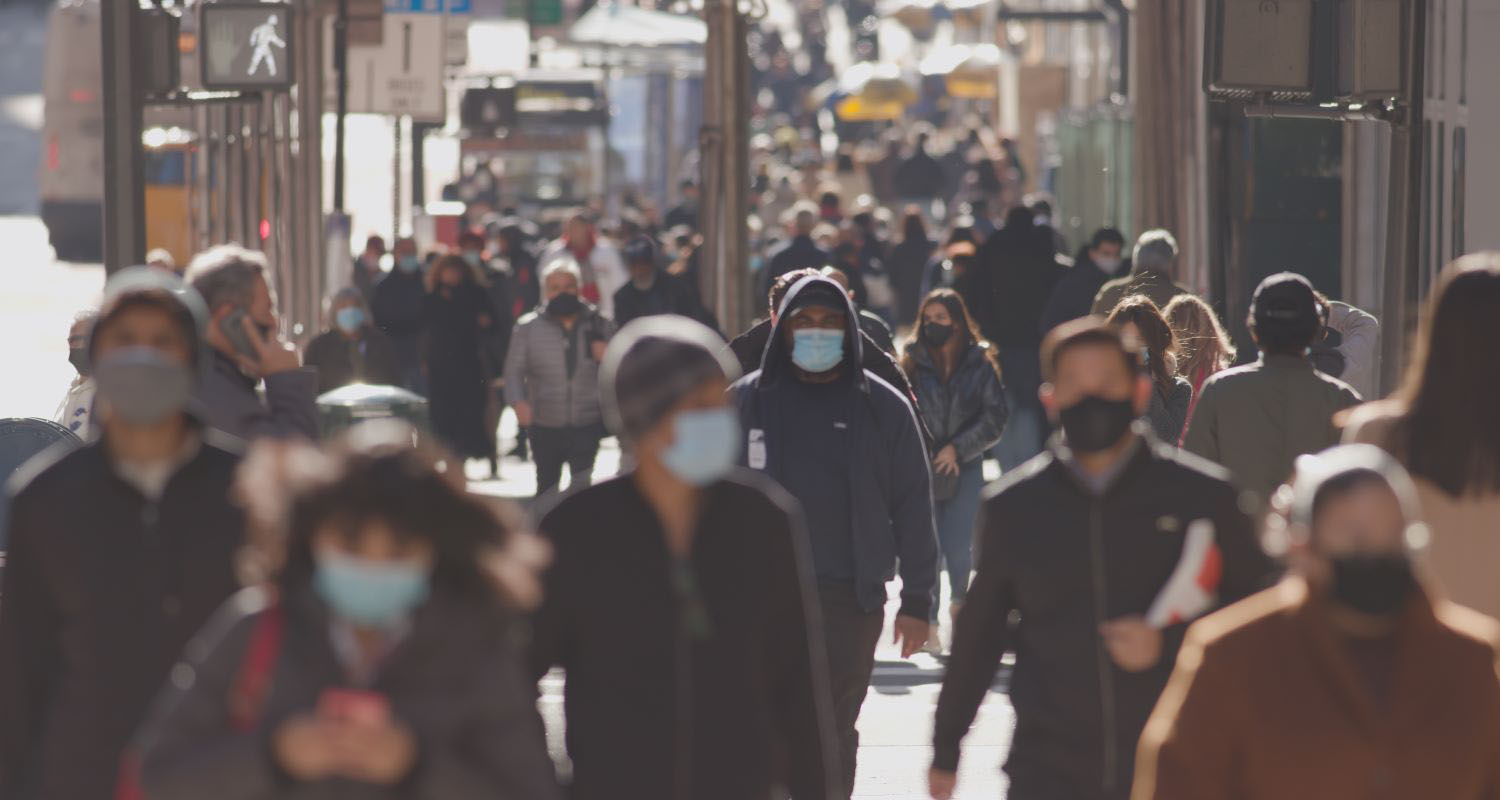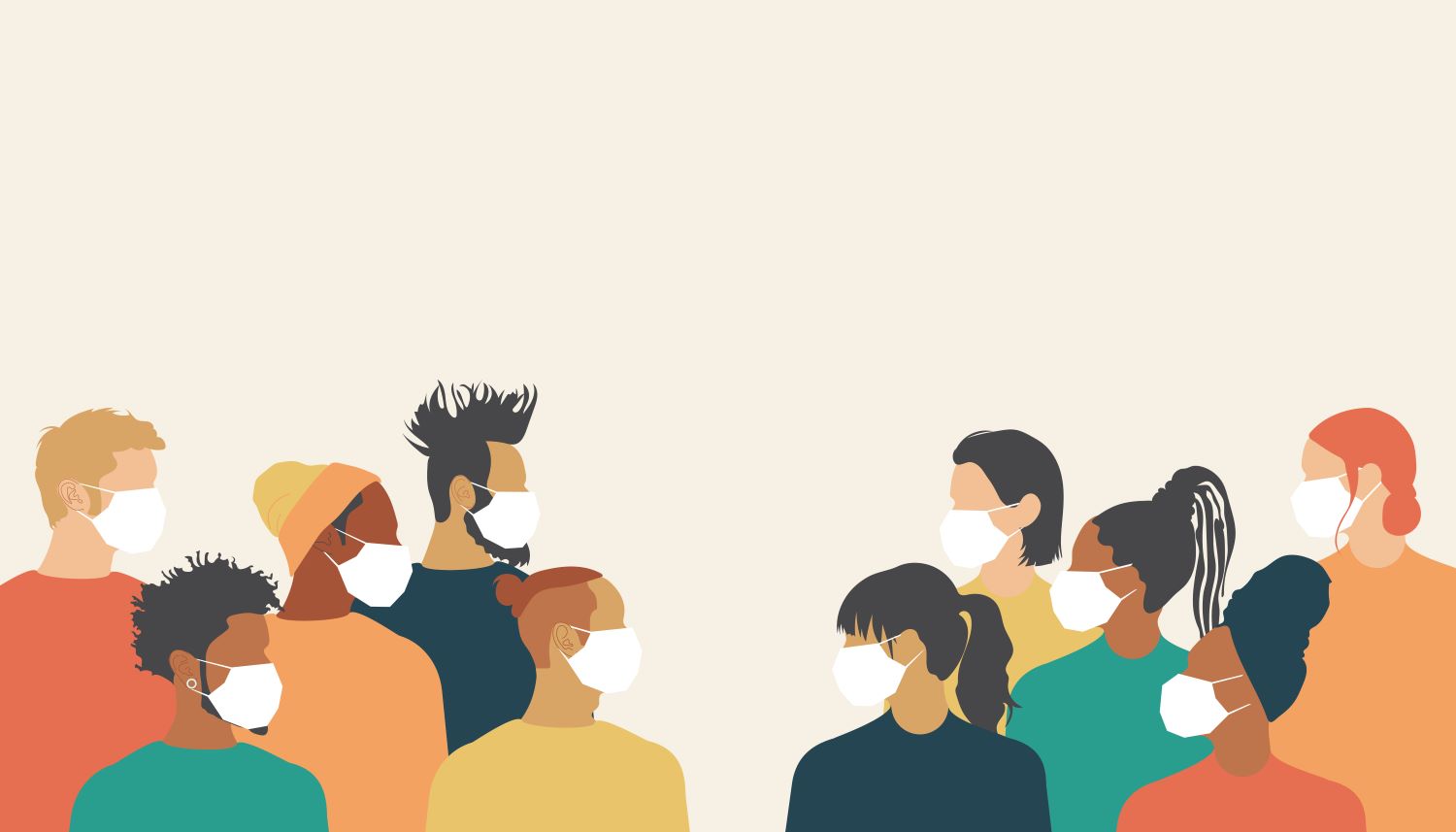Recommended
As travelers cancel flights, businesses ask workers to stay home, and stocks fall, a global health crisis becomes a global economic crisis. In any health crisis, our first concern is (and should be) with the health of those affected. More than 4,000 people have died worldwide and more than 113,000 cases have been confirmed in over 110 countries. But unfortunately, the economic impacts also have dramatic effects on the wellbeing of families and communities. For vulnerable families, lost income due to an outbreak can translate to spikes in poverty, missed meals for children, and reduced access to healthcare far beyond COVID-19. While the spread in the United States and Europe absorbs much of the media coverage, confirmed cases from Bangladesh to Brazil, from Cameroon to Costa Rica, and in many other low- and middle-income countries mean that many of the economic impacts may affect the world’s most vulnerable populations.
Assessing the economic impact of COVID-19
What are the channels of economic impact we can expect from COVID-19? (See the figure below for a summary.)
Beyond the human tragedy, there is a direct economic impact from lives lost in an outbreak. Families and loved ones lose that income and their in-kind contributions to household income such as childcare. Of note, the distribution of COVID-19 fatalities skews old, which means many of those most likely to die are no longer working and are less likely to be the primary provider for their families. (Keep in mind, though, that in many low- and middle-income countries, individuals work until a later age.) Though less likely to pass away from COVID-19, many working age adults still fall ill and their families will feel the financial burden as they miss work for days or weeks.
Figure 1. Broad Channels of Short-term Economic Impact of the Pandemic
Source: Authors’ construction, adapted from World Bank 2014.
Most of the economic impact of the virus will be—as we are already seeing—from “aversion behavior,” the actions people take to avoid catching the virus (which can, it should be noted, be a logical and proportional response). As depicted in the figure above, this aversion behavior comes from three sources:
-
Governments impose bans on certain types of activities, as when the government of China orders factories to shut down or Italy closes most shops throughout the country.
-
Firms and institutions (including private schools and private companies) take proactive measures to avoid infection. Business closures—whether through government bans or business decisions—result in lost wages for workers in many cases, especially in the informal economy where there is no paid leave.
-
Individuals reduce trips to the market, travel, going out, and other social activities.
These actions affect all sectors of the economy—the health sector, manufacturing, retail and other services, trade and transportation, education, and others. These in turn translate into reduced income both through the supply side (reduced production drives up prices for consumers) and the demand side (reduced demand from consumers hurts business owners and their employees).
These short-term economic impacts can translate into reductions in long-term growth. As the health sector soaks up more resources and as people reduce social activities, countries invest less in physical infrastructure. As schools close, students lose opportunities to learn (hopefully briefly) but more vulnerable students may not return to the education system, translating to lower long-term earning trajectories for them and their families, and reduced overall human capital for their economies.
For example, unplanned pregnancies rose sharply in Sierra Leone during the Ebola epidemic, likely in part a result of school closures. Adolescent mothers are less likely to return to school, and their children will likely have fewer health and educational investments. Further, health workers are on the front lines of epidemics and losing some of them to the disease—especially in countries where they’re already in short supply—can lead to worsening health conditions in the long-term, such as maternal and infant mortality. These all have poverty implications well beyond their humanitarian implications.
Beyond China and Iran, most documented cases of COVID-19 to date have been in high-income countries. Latin America and Africa have had particularly few cases, with a few dozen documented in Brazil and fewer in other countries in the regions. It is difficult to know how much of that is due to health systems in some Latin American and African countries not being set up to diagnose cases effectively and how much is due to the virus not yet spreading widely. It is certainly possible that—in the absence of aggressive action—the spread in poorer nations may come later, even as the epidemic gets under control in higher-income countries. As a result, the health consequences and the economic impacts from aversion behavior may reverberate in poor countries longer after the epidemic subsides in rich countries.
What we know so far—and what to expect
Economic estimates of the likely global impact vary dramatically, with Orlik and others at Bloomberg hypothesizing $2.7 trillion in lost output, the Asian Development Bank releasing scenarios from $77 billion to $347 billion, and an OECD report talking about a halving of global economic growth.
Here’s a roundup of analysis of the actual and potential economic impacts of the crisis so far in low- and middle-income countries:
-
Baker-McKenzie reviews the likely impact across sectors in African countries, mostly focusing on the impact that stems from slowdown in the Chinese economy, with reduced Chinese demand for raw materials, likely reduced investments in energy, mining, and other sectors, and a fall in travel and tourism. (March 10)
-
An Asian Development Bank brief proposes four scenarios—best-case, moderate impact, worse case, and worst case—for 22 Asian countries, projecting the largest impacts in the Maldives, Cambodia, and Thailand. (March)
-
DW documents how shutdowns in Chinese factories affect consumers in Africa. “About a fourth of Ugandan imports come from China. Supply chains have been interrupted for weeks because many Chinese factories shut down production. Small traders selling textiles, electronics or household goods are in trouble… In Niger, stocks of certain goods, including groceries, from China have already been significantly decimated, leading to higher prices.” In Zimbabwe and Angola, exports to China have crashed. (March 3)
-
Jeremy Stevens of Standard Bank in Beijing points to an array of likely disruptions but highlights that once the epidemic is under control, “much of the rationale for China’s endeavors in Africa (or Belt and Road, for that matter) are to leverage China’s competitive advantage in infrastructure, offshore some overcapacity sectors, and heavier industry, and tap into fast-growing consumer markets. All of this remains.” (February 28)
-
Strategy& estimates “a potential loss of at least R200 million in Chinese tourist spending” in South Africa. (February 20)
-
Dai, Hu, and Zhang report from the Enterprise Survey for Innovation and Entrepreneurship in China that “20 percent of surveyed firms will be unable to last beyond a month on a cash flow basis, and 64 percent beyond three months, presenting a dire picture for [small and medium-sized enterprise] bankruptcies under an extended epidemic scenario.” (February 28)
As you can see, most of the data and observed impacts in the developing world so far stem from production and export stoppages from China, and pre-date the worsening economic conditions in Europe and the United States. But as the economies of other countries slow down with the spread of the disease, we’ll see these impacts show up more clearly in economic data and likely grow over time.
What should we do to minimize COVID-19’s economic impact? Recommendations from the IMF
What actions can policymakers and donors take to lessen the economic impacts of the COVID-19 pandemic for low- and middle-income countries? Here are three actions beyond the stimulus and liquidity recommendations from the International Monetary Fund:
-
Contain the pandemic. As our colleague Jeremy Konyndyk puts it, “To assuage market reactions to the outbreak, you have to present a viable plan to defeat *the outbreak*.” As long as the outbreak is actively spreading, many aversion behaviors may well be rational and wise. Containing the disease is the first step to mitigating not only the health impacts but also the economic impacts.
-
Strengthen the safety net. The most vulnerable households are those most likely to be affected economically. Low-wage workers are often those most likely to lose their jobs if they miss work due to an extended illness. They are often the least able to work remotely to avoid contracting the virus. And they are the least likely to have savings to survive an economic downturn. Making sure there is an economic safety net—cash transfers, sick leave, subsidized health coverage—in place helps the most vulnerable survive and provides support to enterprises that serve those populations.
-
Measure the impact. Systematic data on which populations are experiencing the greatest hardships and which industries are failing is essential to providing assistance. During the Ebola epidemic of 2014-2015, researchers used phone surveys in Sierra Leone and Liberia—building on the sample frames from existing surveys—to gather just-in-time information on the impacts of both ill health and aversion behavior on households and enterprises across the countries. Even as we monitor the health situation across and within countries, monitoring the economic situation and providing support to households in need can mitigate the most urgent needs.
David Evans and Mead Over worked with a team to estimate the potential economic impact of the 2014 Ebola epidemic. Amina Mendez Acosta provided research assistance for this post.
This translation of a CGD blog was first published by The Conversation. Read the original translation here.
Les voyageurs annulent leurs vols, les entreprises demandent aux travailleurs de rester chez eux, les stocks diminuent… la pandémie devient une crise économique mondiale. Dans toute crise sanitaire, notre première préoccupation est (et devrait être) la santé des personnes touchées. Plus de 7 500 personnes sont déjà mortes dans le monde et plus de 184 000 cas ont été confirmés dans 159 pays ou territoires.
Les conséquences économiques sont dramatiques pour le bien-être des familles et des communautés. Pour les familles vulnérables, la perte de revenus due à une épidémie peut se traduire par des pics de pauvreté, des repas manqués pour les enfants et un accès réduit aux soins de santé bien au-delà du Covid-19. Des cas ayant été confirmés dans de nombreux pays à faible et moyen revenu, les populations les plus vulnérables du monde seront affectées.
Que pouvons-nous attendre du Covid-19 ? Au-delà de la tragédie humaine, il y a un impact économique direct lors d’une épidémie. Les familles et leurs proches perdent ce revenu et leurs contributions en nature au revenu du ménage, comme la garde des enfants.
De nombreux adultes en âge de travailler tombent malades et leurs familles ressentent le fardeau financier dû au fait que les malades doivent s’absenter du travail pendant des jours ou des semaines.
Comportement d’évitement ?
L’essentiel de l’impact économique du virus sera dû à un « comportement d’évitement ». C’est-à-dire les mesures prises pour éviter la contagion. Le comportement d’aversion provient de trois sources :
-
Les gouvernements imposent des interdictions sur certains types d’activités. La Chine, l’Espagne, l’Italie ou encore la France en Europe, le Congo ou bien la Côte d’Ivoire en Afrique, tous ont, tour à tour, annoncé le confinement total de leurs populations respectives.
-
Les entreprises et les institutions, publiques ou privées, prennent des mesures proactives pour éviter l’infection. Les suspensions d’activités – que ce soit par des interdictions gouvernementales ou des décisions de la direction – entraînent des pertes de salaire pour les travailleurs, en particulier dans l’économie informelle, où il n’y a pas de congés payés.
-
Les individus voient leurs déplacements réduits au strict nécessaire.
Ces actions touchent tous les secteurs de l’économie. Elles se traduisent à leur tour par une réduction des revenus, tant du côté de l’offre (la réduction de la production entraîne une hausse des prix pour les consommateurs) que du côté de la demande (la réduction de la demande des consommateurs nuit aux propriétaires d’entreprises et à leurs employés).
Ces impacts économiques, à court terme, peuvent se traduire par une réduction de la croissance, elle, à long terme. À mesure que le secteur de la santé absorbe davantage de ressources et que les gens réduisent leurs activités sociales, les pays investissent moins dans les infrastructures physiques. La fermeture des écoles fait perdre (brièvement, espérons-le) aux élèves des occasions d’apprendre. Mais le plus inquiétant reste que les élèves les plus vulnérables risquent de ne pas réintégrer le système éducatif. Ce qui se traduit par une baisse des revenus à long terme pour eux et leur famille, et par une réduction du capital humain global de leur économie.
Par exemple, les grossesses non planifiées ont fortement augmenté en Sierra Leone (de 44 % dans la ville de Kenema à 172 % pour celle de Kailahun) pendant l’épidémie d’Ebola, probablement en partie à cause des fermetures d’écoles.
Les mères adolescentes ont moins de chances de retourner à l’école, et leurs enfants auront probablement moins accès à la santé et l’éducation.
En outre, l’infection et la mort des travailleurs de la santé, en première ligne des épidémies, peuvent entraîner une détérioration des conditions sanitaires à long terme, comme la mortalité maternelle et infantile. Tous ces facteurs ont des conséquences sur la pauvreté bien au-delà de leurs implications humanitaires.
Ce que nous savons jusqu’à présent
Les estimations économiques de l’impact mondial varient considérablement. Dans un article récent, Bloomberg émet l’hypothèse d’une perte de production d’environ 2,5 milliards d’euros. La Banque asiatique de développement prévoit des pertes allant de 70 à 315 milliards d’euros, et un rapport de l’OCDE évoque une réduction de moitié de la croissance économique mondiale.
Une analyse récente des impacts économiques réels et potentiels de la crise donne un aperçu de la situation. Dans tous les secteurs des pays africains, l’impact économique découle du ralentissement de l’économie chinoise, avec une réduction de la demande chinoise de matières premières. Cette analyse prévoit une réduction des investissements dans l’énergie, les mines et d’autres secteurs, ainsi qu’une baisse des voyages et du tourisme.
Une autre analyse signale que les fermetures d’usines chinoises ont eu des effets négatifs sur les consommateurs en Afrique. Au Zimbabwe et en Angola, les exportations vers la Chine se sont effondrées.
Environ un quart des importations ougandaises proviennent de la Chine. Les chaînes d’approvisionnement ont été interrompues pendant des semaines parce que de nombreuses usines chinoises ont cessé leur production. Les petits commerçants de textiles, d’électronique ou d’articles ménagers sont en difficulté…
Au Niger, les stocks de certains produits, dont les produits alimentaires, en provenance de Chine ont déjà été fortement réduits, ce qui a entraîné une hausse des prix.
La plupart des données et des impacts observés jusqu’à présent dans le monde en développement proviennent des arrêts de production et d’exportation de la Chine, et ces estimations sont antérieures à la détérioration des conditions économiques en Europe et aux États-Unis. Mais à mesure que les économies d’autres pays ralentiront avec la propagation de la maladie, ces impacts apparaîtront plus clairement dans les données économiques et augmenteront probablement avec le temps.
Que faut-il faire ?
Au-delà des nombreuses recommandations en matière de stimulation et de liquidité du Fonds monétaire international (mesures de relance monétaire plus larges, politiques économiques ciblées, aide de la communauté internationale envers les pays dont les capacités sanitaires sont limitées, etc.) nous ajoutons trois recommandations :
Premièrement, contenir la pandémie. Comme le dit notre collègue Jeremy Konyndyk, pour apaiser les réactions du marché à l’épidémie, vous devez présenter un plan viable pour vaincre l’épidémie.
Tant que l’épidémie se propage activement, de nombreux comportements d’évitements sont rationnels et judicieux. Contenir la maladie est la première étape pour atténuer non seulement les conséquences sanitaires, mais aussi les conséquences économiques.
Ensuite, il faut renforcer le filet de sécurité. Les ménages les plus vulnérables sont ceux qui risquent le plus d’être touchés sur le plan économique. Les travailleurs à bas salaire sont souvent ceux qui risquent le plus de perdre leur emploi s’ils s’absentent du travail en raison d’une maladie prolongée. Ils sont souvent les moins aptes à travailler à distance pour éviter de contracter le virus. Et ils sont les moins susceptibles de disposer d’économies pour survivre à un ralentissement économique.
S’assurer qu’un filet de sécurité économique est en place – transferts d’argent, congés de maladie, couverture maladie subventionnée – aide les plus vulnérables à survivre et apporte un soutien aux entreprises qui servent ces populations.
Troisièmement, mesurer l’impact. Des données systématiques sur les populations qui connaissent les plus grandes difficultés et sur les industries qui échouent sont essentielles pour fournir une assistance. Pendant l’épidémie d’Ebola de 2014-2015, les chercheurs ont utilisé des enquêtes téléphoniques en Sierra Leone et au Libéria (en s’appuyant sur les bases de sondage des enquêtes existantes) pour recueillir des informations sur les effets de la mauvaise santé et des comportements d’aversion sur les ménages et les entreprises dans les pays.
Amina Mendez Acosta a fourni une assistance à la recherche pour cet article.
Disclaimer
CGD blog posts reflect the views of the authors, drawing on prior research and experience in their areas of expertise. CGD is a nonpartisan, independent organization and does not take institutional positions.








